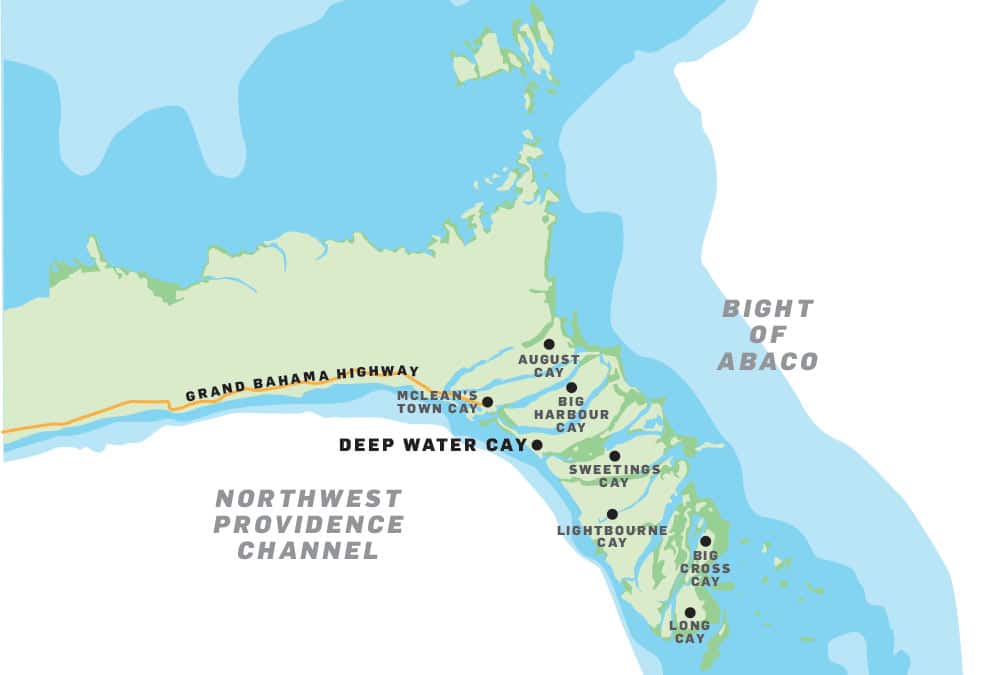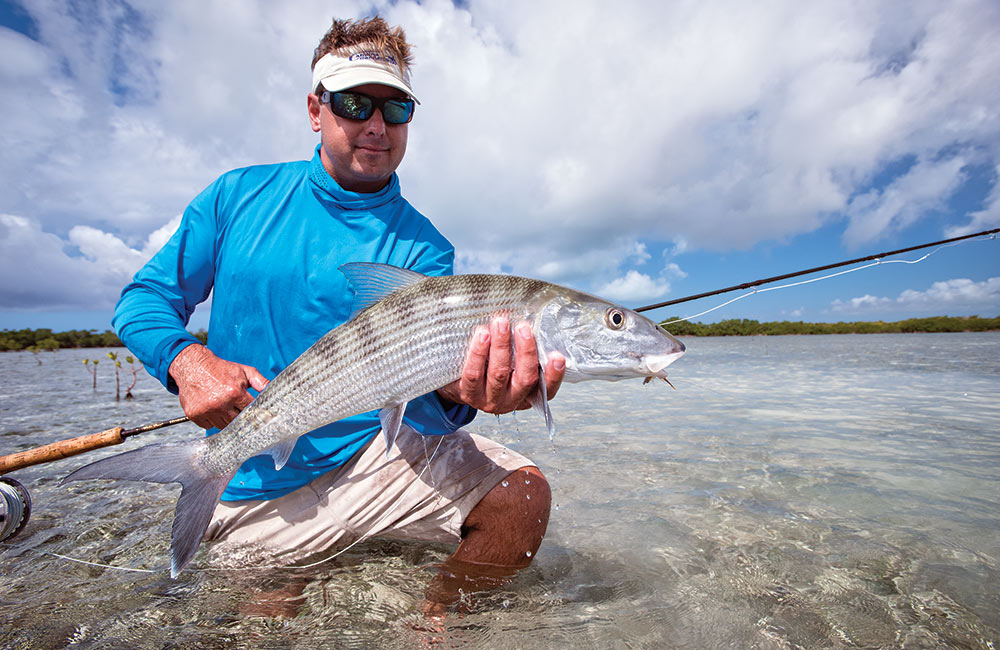
In October 2016, Hurricane Matthew made landfall as a Category 4 storm on Grand Bahama Island, demolishing settlements and sweeping over West End, a favored destination for anglers crossing the Gulf Stream from Florida ports. A 65-mile run from West Palm Beach, West End opens the door to a wealth of offshore, reef and flats fishing, and serves as a port of entry to the entire Bahamas chain. Five months after the storm, we set out to check the facilities and see how this important fishing destination had survived.
West End Rendezvous
Photographer Bill Doster and I flew into Freeport and made the 20-mile drive to West End to meet the rest of our crew: Marlin magazine Editor-in-Chief Andrew Cox, photographer Austin Coit and Capt. Skipper Gentry, who’d driven his 43-foot Viking Carolina Gentleman from Fort Lauderdale.
Storm damage was evident along the course of our drive, but at West End, we found nearly complete recovery.
We based at Old Bahama Bay, which has newly renovated dockage, with fuel, accommodations, and all the services visiting anglers need, including a restaurant that serves the best grouper grilled-cheese sandwich you’ll ever stuff into your pie hole. Nearby, Blue Marlin Marina has also fully recovered and is open for business. From West End, it’s a short run around the north side of the island to the Abacos, Eleuthera, and Andros islands to the south. But our plan was to fish the drop-off at West End, work around to the marina at Lucaya, overnight, and then proceed eastward to the flats at Deep Water Cay.
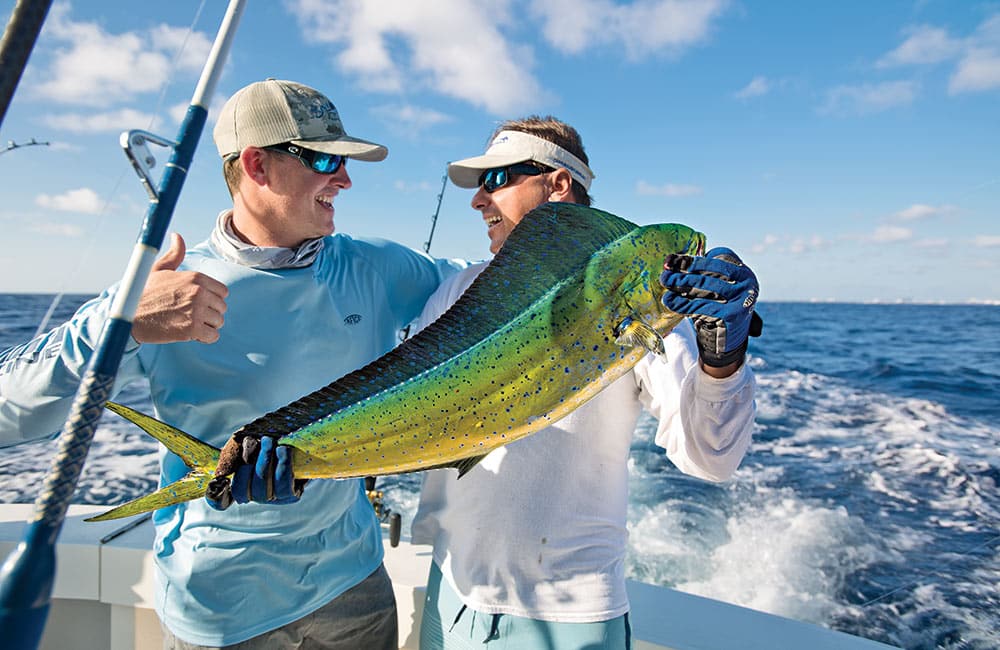
On the Drop
We left West End in our wake just after sunrise and trolled the drop at the edge of the Gulf Stream. Several days earlier, there’d been a substantial wahoo bite, and we were hoping to cash in on it. But despite perfect conditions, our high-speed lures went largely unnoticed.
Sea-surface-temperature maps we’d downloaded to our phones showed a dramatic temperature break to the south, so we worked our way to the mouth of Northwest Providence Channel, pinpointed the break, and our efforts yielded a flurry of dolphin in the afternoon. So we pulled into the marina at Lucaya with fish in the box and found the marina up and running, in good shape. And while some of the hotels still showed damage, Pelican Bay Hotel and the surrounding shops looked as though the storm hadn’t touched them.
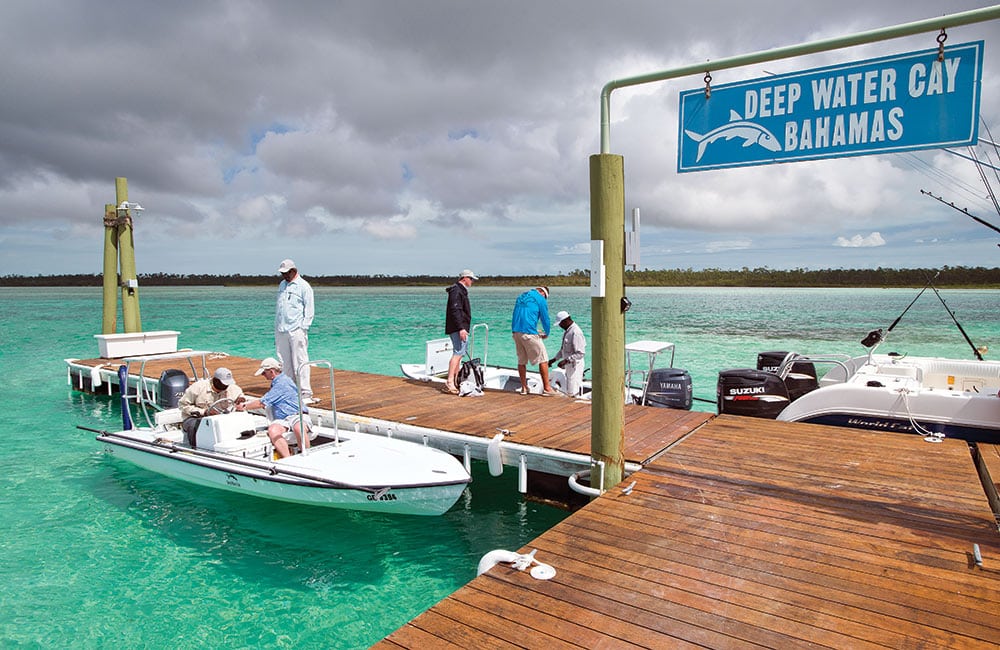
Change Up
A quick check with our next destination, Deep Water Cay, informed us of a controlling depth of 4 feet on the approach. Not wanting to wait for the right tide to slip the 43 Viking across the shoals, we opted to leave the boat at Lucaya and taxi to Deep Water the next morning.
An hour east of Lucaya, as the settlements grow more rustic, the Grand Bahama Highway ends at McLean’s Town, and the pavement fades to a sand track leading to Deep Water Cay Marina. Then it’s a five-minute shuttle across the channel to the 2 ½-mile-long island that is a world unto itself.
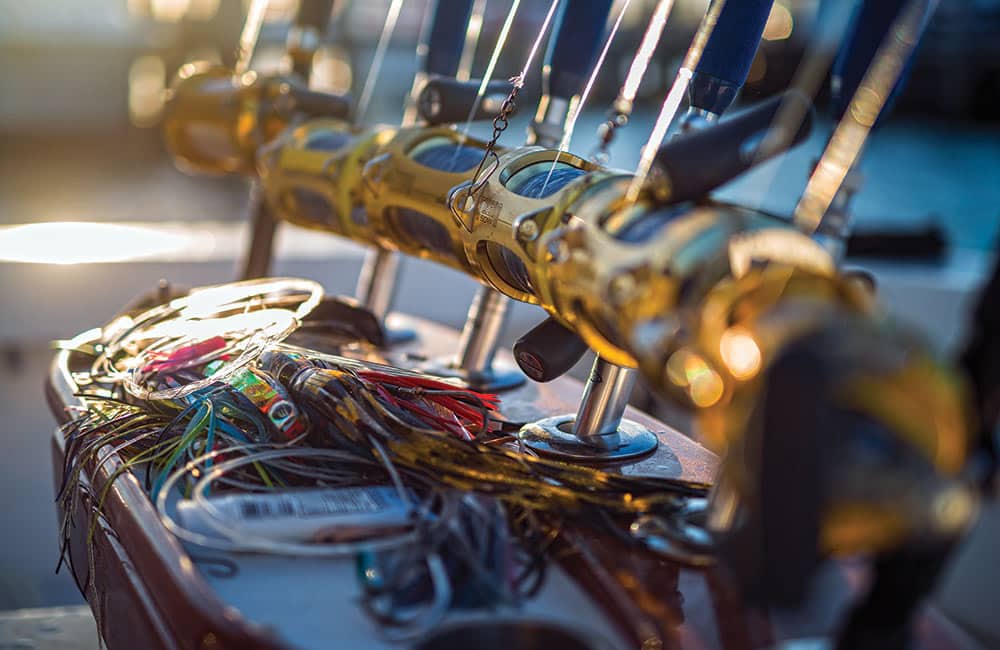
High Style
Deep Water Cay was founded in 1958, a bonefishing frontier developed by Palm Beach charter-boat captain Gil Drake Sr. and A.J. McClain of Field & Stream fame, both flats-fishing enthusiasts. Over the decades, the place has changed hands and recently got a multimillion-dollar upgrade. But throughout, it has maintained a reputation as one of the premier flats-fishing destinations in the Bahamas, where bonefish are both abundant and large, and service and facilities remain second to none. The Cay itself sits as the gateway to more flats than the average angler could explore in a lifetime. Four miles to the east, through a series of deep creeks and a labyrinth of flats, lies the Bight of Abaco. To the north and south, some 15 miles of broken cays, creeks and sand bores hold every variety of bonefish habitat, from white sand to lush turtle-grass meadows. So complex is this flats-scape that the tide is always right somewhere.
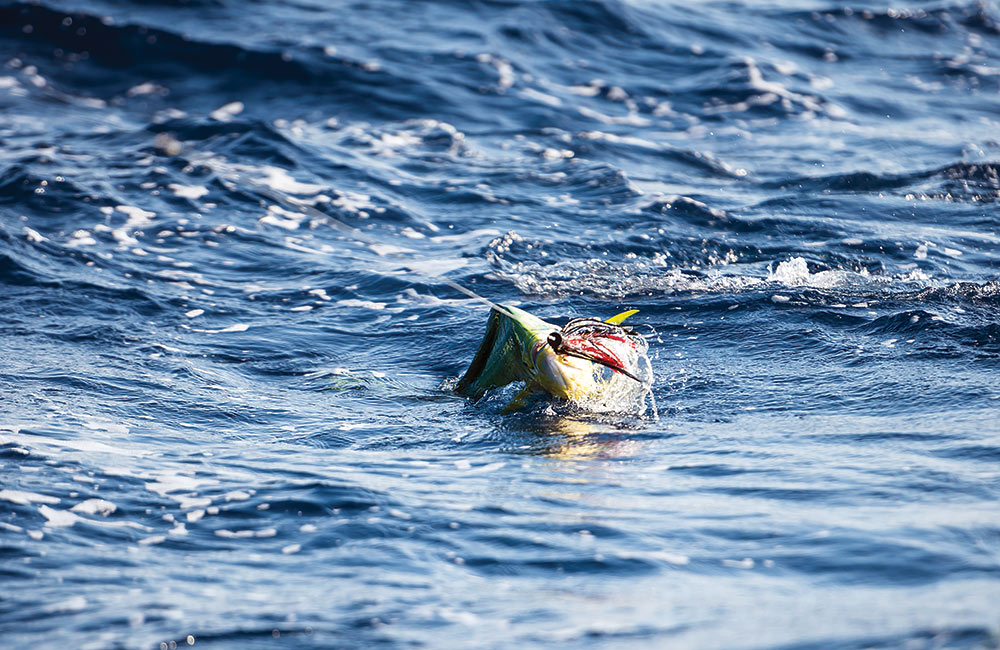
World Class
Outfitted with Hell’s Bay skiffs skippered by some of the most experienced guides in the islands, Deep Water Cay offers a fine-tuned fishing program. After stocking up on the preferred local flies at the lodge tackle shop, we met Kenny Cooper, a 12-year veteran guide at Deep Water, at the floating dock for our first afternoon of fishing. We’d brought our own gear, but had we not, the lodge has everything: quality rods for rent, along with fly lines, leaders, flies and fishing apparel. You could show up with just your toothbrush and a fat wallet and want for nothing.
The run through the channel around Big Harbour Cay brought us onto the flats skirting the west side of the Bight of Abaco, where our three-boat flotilla split up. And while the light wasn’t the best for spotting fish, we reconvened a couple of hours later, each with a bonefish to our credit. Cox, with his first-ever on fly, joined a list of anglers that represent Deep Water’s hallmark: getting anglers that coveted first bone on a fly.
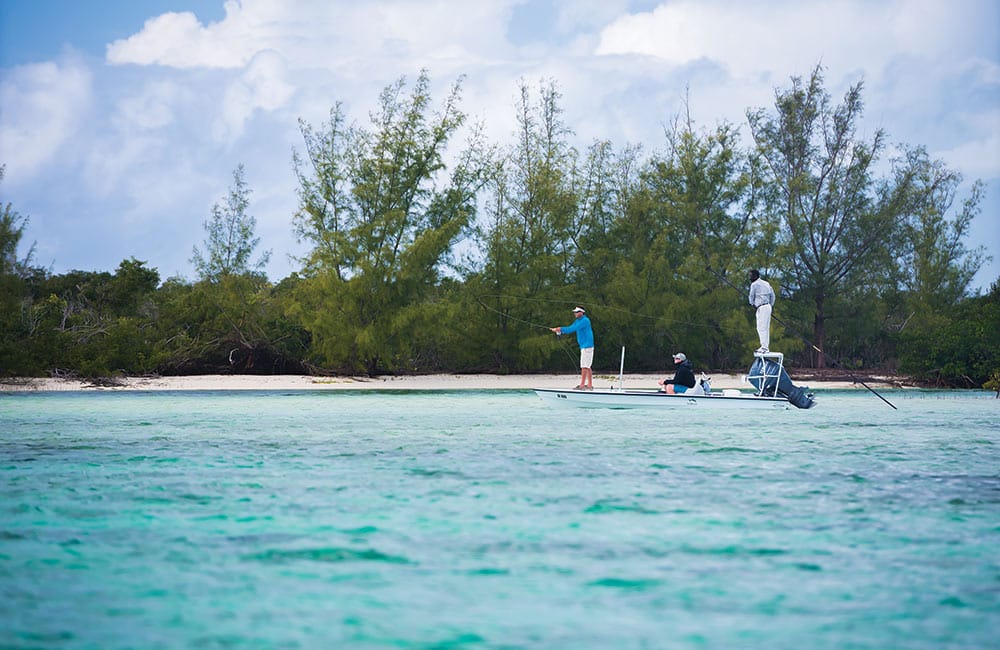
Lesson Learned
The next morning, we were back at it, and when the first school of the day ambled toward us across the flats, I dropped the fly ahead of the nearest fish, and it turned and took. I quickly tightened, but not tight enough, and the fly came back at me. The fish changed course but didn’t bolt, so once more I laid the fly out alongside it, and again it turned and sucked in the fly. This time, I set the hook, and two blistering runs later, I slipped the fly out of its lip and watched it swim away, perhaps a little wiser now. Though, I’ll take a dumb bonefish anytime.
The next few shots didn’t go so well, and it was lesson time: the inevitable event when the guide takes you to school. “Throw off to one side,” Cooper explained. “They’ll see the fly and come after it.” I had been casting ahead of the bones, much as you’d do with tailing fish. These, however, were cruising and hunting, and Cooper insisted that a cast alongside the fish was a higher percentage shot. “How far away?” I asked him. “They’ll see it from 10 feet.”
Shortly after he climbed back on the poling tower, another school approached. As coached, I dropped the fly alongside the nearest fish, and sure enough, it turned and ran it down.
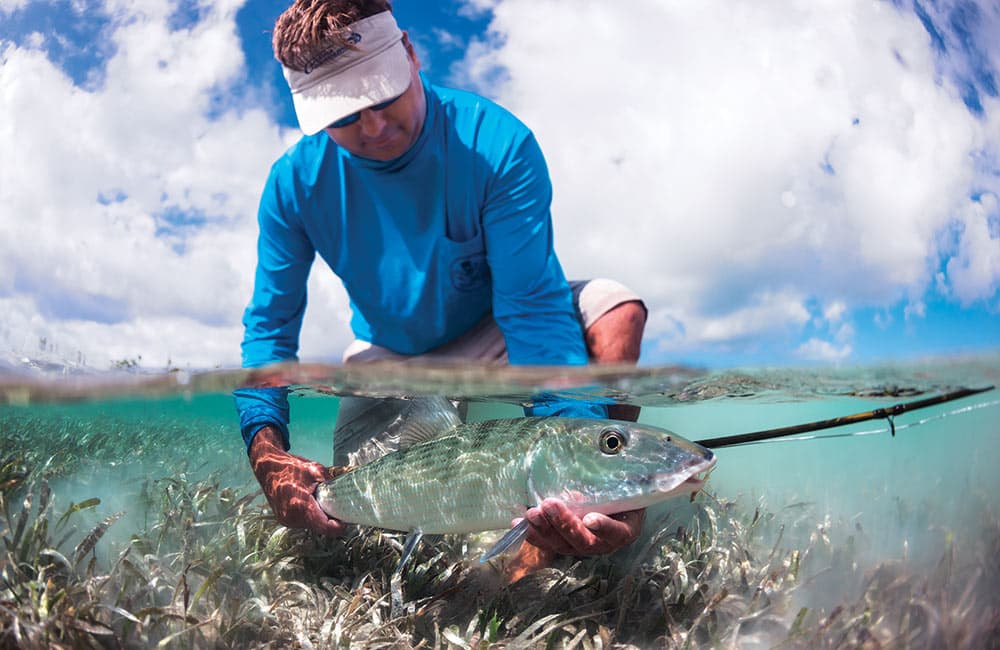
Reason to Return
With two fish under our belts, we motored down and ran north. On a deep flat, against a punishing wind, we found bonefish — big ones — cruising in 4 feet of water. Only these guys were traveling, not looking for lunch. We watched fish from 8 pounds into double-digit weights cruise past in singles and pairs, but today was not our day, and soon it came time to reel up and head back to the dock.
Like all good trips, we were headed home too soon, but assured the fishing on Grand Bahama, from end to end, had prevailed after the monumental storm. There remain bigger bonefish waiting at Deep Water, wahoo to be taken from the depths off West End, and maybe another grouper grilled-cheese sandwich.
